Kyoto' Temples & Shrines: unique architecture, historical footprints & spiritual significance
- sinjahaag
- 26. Jan.
- 16 Min. Lesezeit
Aktualisiert: 21. März
Kyoto is renowned for its incredible array of scared grounds, out of which many are UNESCO World Heritage Sites. In this article, a collection of memorable temple & shrine visits in- and around Kyoto is compiled, aiming to share inspiration, awareness & knowledge, whilst easing your own decision on which temple premises to visit yourself out of the uncountable possibilities to choose from!
Kyoto embraces over 1600 temples and 400 shrines. Each temple offers unique architecture, history, and spiritual significance. Given the high number of available sacred places pretty much forces you to pick-and-choose a handful of places to visit. Various smaller temples and shrines don't require an up-front planning, as they can be found all across the city; on the main roads, in side streets, behind every corner. Trust me, they are pretty much everyhwere! Some of the most famous temple premises advertised and referred to are the following:
Kinkaku-ji (Golden Pavilion), Ginkaku-ji (Silver Pavilion), Kiyomizu-dera (Pure Water Temple), Ryoan-ji, Nanzen-ji, Tofuku-ji, Tenryu-ji, Sanjusangen-do, Eikando Zenrin-ji, Daigo-ji, Byodo-in
In the following, I will introduce my personal visits & highlights, covering most of the most famous sacred grounds listed below. If I was to rank my Top-5 (without any specific numbering sine all of them have a unique charm both historical & spiritual background) I'd recommend the following:
My Top 5 Recommendations:
Kuramadera Temple
Ginkaku-ji Temple
Sanjusangen-do Temple
Fushimi Inari-Taisha Shrine
Ryozen Kannon Temple
:The below compiled collection includes my recommended must-see's of Kyoto's of temples & shrines. Have a thorough read through or simply click on the quick links to be forwarded directly.
Kyoto's Must See- Temple's
Sanjusangen-do-Temple: home of the 1001 Kannon Statues
This impressive temple was actually not on my radar when exploring Kyoto but honestly marks one of the most remarkable interiors I have been able to see! On the recommendation of my hostel, I went here without any expectations and was literally blown away.
The inconspicuous exterior facade of the temple premises surprises with a real treasure inside: 1001 unique statues of Kannon, Buddhist goddess of mercy embodying compassion, are lined along the 120 meter long wooden main hall with a massive Thousand-Armed Kannon main statue in its centre. Each of the 1001 statues are unique in form, size, facial expression and attire. Carved from Japanese cypress the impressive mass of Kannon statues showcase the craftsmanship of the former Kamakura period. In a front line of these statues, 28 guardian deities, whose origin lie in Hinduism, are enthroned, believed to protect the Buddhist deity Kannon.
When entering the main building, you will be walking the 120 meter long wooden hallway from the back, passing several paintings and explanation boards on the temples history. The official name of Sanjusangen-do is Rengeo-in Temple. Established in 1164 by the powerful warrior-politician Taira-no-Kiyomori, the temple was lost in a fire but shortly after reconstructed in 1266. It has undergone a total of 4 rennovation periods but its structure has always remained unchanged for over 700 years. Due to its thirty-three spaces between columns in the wooden main hall, the temple came to be called Sanjusangen-do ("Hall of 33 Bays").
To protect the statues, photos are prohibited to be taken. Shoes must also be taken out prior to entering the main hall. This temple is a fantastic experience that will leave you in awe. Take your time to marvel at these impressive creations; it is worth a visit!
Practical Information
How to get here: By Train:
Hop on the Keihan Line to Shichijo Station and walk 5 - 10min.
By Bus:
Opening Hours: open daily from 9am - 5pm
Admission: 600JPY
Fushimi Inari-Taisha: thousands of torii gates for prosperity blessings
Fushimi Inari Shrine (Fushimi Inari Taisha) is an important and famous Shinto shrine in the south of Kyoto, dedicated to Inari, Shinto god of rice, prosperity and business. Featuring the famous Senbon Torii (thousands of torii* gates); it embodies a magical photo backdrop lining its way towards sacred Mount Inari right behind its main building. The seemingly uncountable torii gates are the result of donations from both individuals and businesses in gratitude for blessings. Each donor's name is immortalized into one of the torii gates.
Throughout the premises, you will discover numerous fox statues, called kitsune, who are believed to be Inari's messengers. Some of these hold items in their mouth, such as keys.
*torii are traditional entrance gates of a shrine, which symbolize the transition from the profane to the sacred

If you are lucky enough to get a good photo inside the torii gates, you can continue taking a shorter or longer walk up Mount Inari, where you will find plenty of smaller shrines beautiful to look at. Some of these also provide several torii gates making it easier to get a good picture without the big crowds. The walk through the woods is very quiet and peaceful, almost a bit meditative, away from the noisy crowds. In some corners, you might be able to have a beautiful panoramic view over Kyoto. If your aim is to reach the summit of Mount Inari, you will probably need 2 - 3
hours; most people choose to do a smaller loop. In any case, pay attention to not get lost, as several trails interwind along the road, either bringing you further up the mountain or deeper into the forest. My initially planned 20min. walk quickly turned into a 2 hour adventure-trail. I am not complaining, as I met some really nice and helpful people along the way, though need to be honest by saying that I was panicking a bit for quite a while once my Google Maps decided to not function anymore. But hey, since I am already aware of my oftentimes non-existing orientation skills, I at least planned some extra time buffer up front. You learn from experience.
As the shrine is open daily without any time-bound limitation to access, it is worth coming early in the morning to avoid bigger crowds, which you will be facing around early midday to the afternoon. Snacks and souvenirs can be found in front of the shrine, as the street leading to/ away Fushimi Inari is lined with several food stalls and souvenir opportunities. Near the station, you will also find several convenience stores and restaurants.
Practical Information
How to get there: Either take the JR Nara Line to Inari Station (2min. walk from station) or the Keihan Main Line to Fushimi-Inari Station (5minute walk from station)
Opening Hours: open daily, no time limitations
Admission: free of charge
Kuramadera Temple: spiritual energy in mountainous scenery
Just like Sanjusangen-do-Temple, Kuramadera initially was not on my list for visiting, again recommended by the lovely receptionist at my hostel and just like in the first case a definite highlight of Kyoto's temples!
Located in the northern part of Kyoto's beautiful mountain scenery, Mount Kurama, Kuramadera is a spiritual temple with mystical legend associations, containing a history from the year 770CE onwards. The temple is dedicated to the worship of the deity Bishamonten, along with Gohō Maōson, a guardian deity believed to have descended from Venus. All around the temple area you will find so called tengu, long-nosed, red-faced imageries of mystical creatures, believed to be guardians of the mountain. Legend states, that the warrior monk Minamoto no Yoshitsune was born and trained by Sojobo, lord of the tengu. This also gives reason why the forested area is considered sacred and is said to emanate powerful spiritual energy.
Getting off Kurama Station, you will firstly bump into a massive tengu statue, famous for taking pictures. A small village of differing shops line the path towards the temple premises entrance. Here, you can try traditional mochi, matcha- or tea infused ice creams, prior to starting your mountain adventure.
The temple's main hall, Honden, offering breathtaking views of the surrounding areas and valleys. You can choose between a 15min. uphill walk from Kurama Station or taking the cable car for a small additional purchase (around 200JPY one way).
Reaching Kuramadera temple, you will also find a sandō (sacred path to a shrine/temple), connecting Kuramadera to the nearby village of Kibune, where the famous Kifune Shrine is located alongside a range of cozy restaurants and plenty of other sacred shrines. If you decide to walk here, please be aware that you will need to take a bus to the nearest train station (pay attention to times!); otherwise, you can also walk 45min - 1 hr. back to the main train station, as I did (not really recommendable). For your walk you also have the possibility to pick up some Worship Sticks accompanying your hikes through the forests of the mountain.

Through the foresty area, the hike from Kuramadera to Kibune will take you 1 - 1,5 hours. However, if you plan to stop along the way for taking some snapshots or soaking in the beautiful nature scenery, you should consider some additional time on top.
The hiking path is peaceful and quiet, almost like a meditative journey. You will meet several hikers, resting areas, small waterfalls and shrines whilst walking. If you are by yourself, take caution on internet access, as the signpostings are not always clear in terms of finding the right way- many branching paths might cross you way, making it easy to get lost. Depending on the season, I recommend coming here early, so that you have enough time to explore the area without facing an early dawn whilst being stuck in the woods.
Another fantastic spectacle is the return ride back from Kumadera Station to Kyoto on the Eizan Railway at night! Right before entering Momiji Tunnel ("momiji" literally translates into "autumn colours") , the light inside the train is turned off, whereas the outside surroundings are spotlighted, illuminating the beautiful red colour gradations of maple trees. Understandable that everyone on the train reacts with a both surprised and stunned "awwwe".
Practical Information
Address: 1074 Kuramahonmachi, Sakyo Ward, Kyoto, 601-1111, Japan
How to get here: Take the Eizan Train towards Kurama, get off at Kurama station Opening Hours: open daily from 9am - 4:30pm
Admission: 200JPY
Kifune Shrine: sacred water & fortune telling papers
Kifune Shrine is located in the mountainous surrounded area of the village Kibune, situated north of Kyoto. The shrine is dedicated to the deity of Takaokami-no-kami, god of water and rain, believed to control water flow and protect against both drought and flooding. The Shrine consists of three separate locations to explore: the Hongu (main shrine), Yui no Yashiro (middle shrine), and the Okunomiya (inner shrine).
The beauty of this shrine is the, uphill leading, wonderful red lantern-lit stone stairway, which is especially enchanting during evening hours. That's all the magic? Not quite.
Another specialty about Kifune Shrine is the sacred purified water, called goshinsui, streaming down from Mount Kurama. In some sections of the Shrine, you might find smaller fountains
to try a sip. The water has been praised for many centuries and is a popular source to be used when cooking or making tea.
When exploring the Shrine, you might see people holding snips of paper under streaming fountains of sacred water. These papers are fortune telling sheets, called mizuura mikuji, which you can purchase at the entrance of Kifune Shrine for a small fee. How does it work? Simple. Place the fortune telling sheet under water and wait for a bit. The sheet will reveal your personal fortune via a written appearance on paper, though soon after disappears, as water will be soaking through. An integrated QR code supports you in translating your Japanese fortune into your respective native language via smartphone.
Kibune village itself is another great area to take a rest, as it is paved with plenty of restaurants and cafes alongside a peaceful river.
Visiting Kifune Shrine early in the morning additionally gives opportunity to pair your visit with a lovely hike uphill to Kuramadera Temple. The hike is rather steep, taking roughly 1,5 - 2 hours depending on your pace. However, reaching the summit of Mount Kurama gifts you with stunningly beautiful panoramic views, especially delightful during spring or autumn season.
Practical Information
Address: 180 Kuramakibunecho, Sakyo Ward, Kyoto, 601-1112, Japan
How to get here: take the Eizan Railway from Demachiyanagi Station towards Kibuneguchi Station. From here, you can either walk 20 - 30min. or take a local bus to get to the shrine.
Opening Hours: April - November: 6am - 8pm
December - March: 6am - 6pm
Admission: free of charge
Ryozen Kannon Temple: honoring the fallen

Ryozen Kannon Temple thrones in the beautiful Higashiyama district, accompanied by tranquil beautiful mountain area. The meaning of the temple is both significant and touching, as it is dedicated to maintaining peace and honoring those who died or went missing in the Pacific Theater during World War II, independent of nationality and/or ethnic background. Monks of the temple conduct ceremonies to honour the dead of the war four times a day, praying for (world) peace.
Inside the temple premises, you will firstly walk towards a reflecting pool behind which the impressive female deity of Kannon, goddess of mercy and compassion, sits quietly with her eyes closed on a lotus leaf. Inside the building, at the base of the Kannon, a recumbent Buddha and Buddha seated, as well as several memorial tablets can be found. A seperate Memorial Hall for all foreign war dead (in total 28.146 non-Japanese) are listed, honored and remembered. Next to this, a huge ornately carved graphic Buddha footprint, smaller shrines as well as a golden sphere can be found. The golden sphere, also referred to as "nyoi-houju", which translates into "wishing stone" is believed to make your wishes come true by walking clockwise around the stone, touching it.
It's a reflective place for remembrance and learning from the past, underlining the importance of world peace and ability to live together in a unified world that we call our home.
Practical Information
How to get here: By Bus:
Take Kyoto City Bus #100 or #206 to the Kiyomizu-michi or Gojozaka stop, then walk about 10 minutes uphill.
By Train:
From Kyoto Station, take a train to Kiyomizu-Gojo Station on the Keihan Line, then walk approximately 20 minutes.
Opening Hours: open daily from 8:20am - 4:20pm
Admission: 300JPY
Kinkaju-ji: marvelling at the Golden Pavilion
Kinkaju-ji, also known as Rokuon-ji Temple, is a Buddhist Zen Temple whose area used to belong to the so called "Saionji" family. In 1397, the area premises were taken over by "Yoshimitsu", third Shogun of Ashikaga. It was him who built the Kitayama palace centering around the golden stupa Kinkaku. Kitayama Palace, once opened, became the center of politics & culture, used to welcome emperors of Japan and trading partners from China. After Yoshimitsu's death, Kitayama turned into a temple premise, according to his wish. Since then, it is one of Kyoto's most impressive landmarks, attracting tourists from all over the world.
Highlight is, of course, the Golden Pavilion itself, being located right beside the Mirror Pond, called Kyoko-chi, adorned with small islands and stones. The temples facade is covered in gold leaf and holds three levels of impressive and culturally-bound architecture:
1st floor: Shinden-zukuri style (palatial style of the Heian Period).
2nd floor: Buke-zukuri style (samurai house style).
3rd floor: Chinese Zen style
If you look closely, you will also notice a golden Phoenix enthroned on top of the roof. The temple is further surrounded by a spacious beautiful garden area, including a Zen garden, and conveys a magical atmosphere due to the surrounding pond reflection of golden glimmer. Is it worth seeing? Absolutely! But if you were to choose between the Golden- and/or Silver Pavilion, the second would be my choice to go with!
Practical Information
Address: 1 Kinkakujicho, Kita Ward, Kyoto, 603-8361, Japan
How to get here: take Kyoto City Bus #101 or #205 to the Kinkaku-ji-michi stop. Then walk another 5 min.
Opening Hours: open daily from 9am - 5pm
Admission: 400JPY
Philosopher's Path: in the footsteps of Nishida Kitaro
In the northern part of Kyoto, the Philosopher's Path hems a 2km-long stone path stroll along a canal through Higashiyama's district, pleasantly accompanied by hundred of cherry trees. This pleasant walking route covers a great range of diverse and famous temple premises you will pass along the way, such as Kinkaku-ji (Silver Pavilion), Nanzen-ji, Eikan-do, Honen-in and Otoyo Shrine.

The name "Philosopher's Path" originated from a man, wo- how could it be otherwise- belongs to one of Japan's most significant philosophers, namely called Nishida Kitaro. It is said that Nishida used to walk this path every day on his way to Kyoto University and whilst doing so practicing meditation.
The path usually starts at Kinkaku-ji Temple and ends in the neighbourhood of Nanzen-ji. If you take the time to visit all temples it might take you half a day to complete the walk. Several cafes, souvenir shops, boutiques and restaurants can be found along the way, inviting you to sit next to the canal to have a chat and soak in some sun rays.
Practical Information
Address: Tetsugaku No Michi, Sakyo Ward, Kyoto
How to get here: By Bus:
By Train:
Take the Tozai Line to Keage Station. Then walk 10 - 15min. to Nanzen-ji
Opening Hours: open daily
Admission: for free
Ginkaku-ji Temple: the (non-) Silver Pavilion
Ginkaku-ji, known as the Silver Pavilion, belongs to one of most famous landmarks in Kyoto, enlisted in belonging to one of UNESCO World Heritage Sites. Funnily enough, unlike his "brother", the Golden Pavilion, Ginkaju-ji was never covered in actual silver. Two assumptions on the matter of naming exist: the first theory states that Ginkaku-ji was named as contrast, or rather counterpart, to the Golden Pavilion, whereas the second assumption is based on the belief that the reflection of moonlight onto the facade of the temple, which used to be black in ancient times, gives it a silver- shimmering appearance.
Constructed back in 1482 by shogun Ashikaga Yoshimasa, the nowadays Zen Temple premise served as retirement home until his death. It was converted right afterwards, being open to the public ever since. The rather rustic exterior is expression of the Zen philosophy of simplicity and beauty in imperfection. Formally named Kannonden (Kannon Hall), Ginkaku-ju is a two-story-high building, whose architecture differs in style per floor. The interior hosts a big Kannon statue, Buddhist goddess of mercy. However, visitors are not allowed to enter these halls.
Instead, you can enjoy the beautiful garden surroundings of the pavilion, which are a true feast to the eye during autumn. Bathed in diverse grades of red maple leaf colours, the pavilion features the Ginshadan, a dry silver sand garden, meticulously raked and for doing so evoking the impression of waves of the sea. Only a few steps away, Kogetsudai, the so called Moon Viewing Platform, features a massive sand cone symbolising either Mount Fuji or a platform of moon contemplation. Next to the garden, you will also find a tranquil moss garden with well-preserved stone bridges, smaller streams and stone lanterns. Additionally, you will be able to marvel at the Hondo (main hall), displaying several paintings on its sliding doors, called fusuma. Just like the Silver Pavilion itself, the Hondo cannot be entered. Last but not least, Togudu, Ginkaku-ji's only other temple building, is enthroned right next to the main hall of the grounds- again, not open to the public. Finally, passing the temples main hall & Togudo, a nature walkway leads you up a small hill, opening up an excellent viewing platform onto Kyoto's cityscape, as well as the temple grounds.
For me personally, and this might also be due to the fact that the enchanting garden area was lightened up with differing bright autumn colours, the Silver Pavilion was one of my absolute highlights I can warmly recommend seeing. Even though some of the grounds are not accessible to the public, the overall simple, yet neat temple grounds, are simply beautiful to explore!
Practical Information
Address: 2 Ginkakujicho, Sakyo Ward, Kyoto, 606-8402, Japan
How to get here: By Bus:
Take Kyoto Bus #5 or #17 from Kyoto Station to the Ginkaku- ji-michi Stop. Walk 5 - 10min.
By Train:
Take the Keihan Line to Demachiyanagi Station. T ransfer to a bus or walk about 30-40 minutes.
Opening Hours: March - November: 8am - 5pm
December - February: 9am - 4:30pm
Admission: 500JPY
Nanen-ji Temple: imposing aqueduct & disused railway track-walks
Nanzen-ji usually marks the end (or the beginning) of Philosopher's Path. It belongs to one out of Kyoto's Five Great Zen Temples, originally built as imperial villa for Emperor Kameyama in 1291. It is said that these premises used to be haunted by poltergeists in former times, burdening the royal family with negative energy. A Zen priest was consequently hired and finally managed to exorcise evil simply by meditation. This might also be the reason, why the emperor turned his initial housing into a temple ground that hosts a Hojo (main hall) and two-story high Sanmon Gate, which can be entered and climbed by visitors to marvel at Kyoto's panoramic city view.

Nanen-ji covers a spacious area that features a total of 12 sub-temples, including Nanzenin Temple, Tenjuan Temple and Konchi-in Temple (all require a separate admission fee). What I loved most about these premises was the Roman-inspired, red-brick aqueduct, called Suirokaku. It was built during Meiji Era, around 1890, and is beautifully embedded in surrounding greenery. From here, you can easily move onto Kaege Incline.
Practical Information
Address: 86 Nanzenji Fukuchicho, Sakyo Ward, Kyoto, 606-8435, Japan
How to get here: By Train:
Take the Tozai Line to Keage Station. Walk roughly 10min.
By Bus:
Take the Kyoto City Bus #5 or #100 to the Nanzen-ji Eikando-michi stop. The temple is a short walk away.
Opening Hours: open daily from 8:40am to 5pm (times may vary due to season)
Admission: Sanmon Gate: 600JPY
Hojo: 50JPY
Sub-temples require separate fees (usually between 300–500JPY)
Close to Nanen-ji Temple and the Philosopher's Path, I stumbled across a disused railway, which happens to be Kaege Incline, an actual sightseeing attraction, apparently overly crowded during cherry blossom season. As I happened to visit Japan in autumn, I was lucky enough to walk the former railway track almost by myself, quiet and peacefully.

Kaege Incline used to be a part of the so called Lake Biwa Canal System, formerly built in 1895 during Meiji Era, serving to transport merchandise, drinkable water and further goods between Lake Biwa and Kyoto. The tracks were used for boat transportation, consisting of a system of inclined elevators to move ships along the rails. The canal operations finally ceased after 1948 due to more efficient transportation routes, including trucks and trains. Today, Kaege Incline remains as historical site, popular for taking a walk along the remains of the ancient railway tracks. It's a nice stroll down the hill towards the city next to a park, easily integratable when reaching the end of Philosopher's Path.
Practical Information
Address: Nanzenji Fukuchi-cho, Sakyo Ward, Kyoto, Japan
How to get here: Hop on the Tozai Line to Keage Station and walk 5min.
Opening Hours: open daily
Admission: free of charge
Zenkyo-an Temple: mini boars for fertility and luck

Now, this temple is an unusual recommendation, as it is rather small and not on the list of famous sightseeing attractions one would find on the internet. However, I find it worth mentioning, as Zenkyo-an differentiates itself due to a rather special spiritual animal which is in focus: the wild boar. Compared to more traditional Zen Buddhist symbols, such as dragons or cranes, Zenkyo-an Temple is one of its kind I found around Japan and therefore a special and hidden gem to consider. Pigs, or boars, in Japanese culture may symbolise abundance, prosperity, also fertility. Smaller boar statues decorate the temple complex around the main hall with personal wishes and desires, which you can add onto by purchasing a little statue to write on yourself. I found it an unusual, yet enchanting place to visit.
Practical Information
How to get here: By Train:
Take the Keihan Main Line to Gion-Shijo Station, walk 10min. Alternatively take the Hankyu Kyoto Line to Kawaramachi Station, walk 10min.
By Bus:
Opening Hours: 10am - 4:30pm
Admission: free of charge












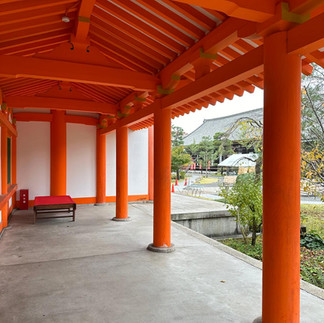







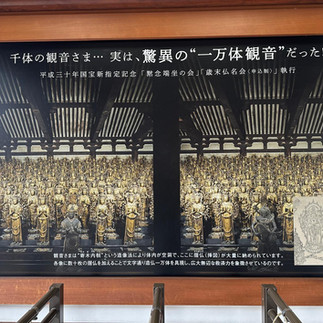









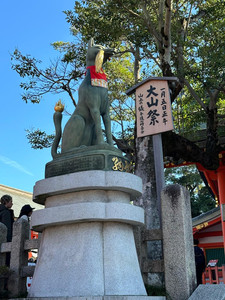



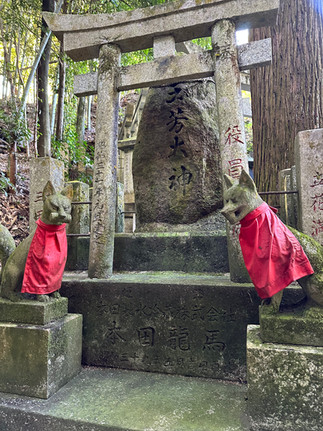













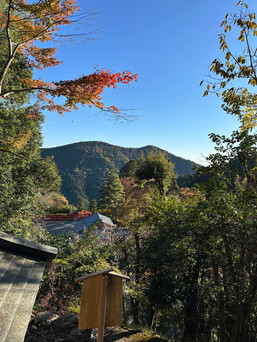

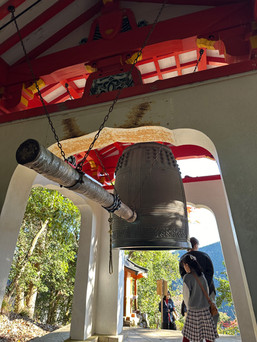



















































































Kommentare